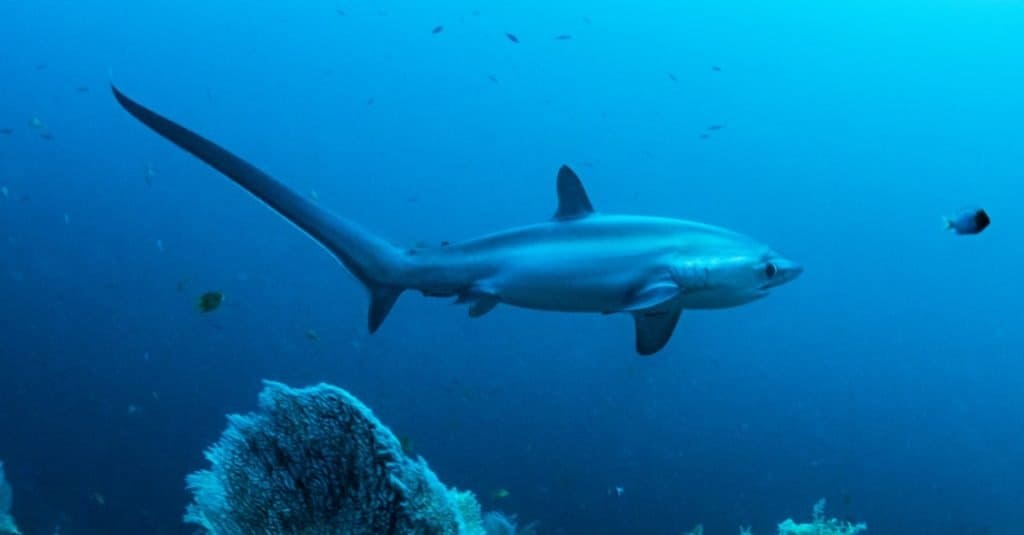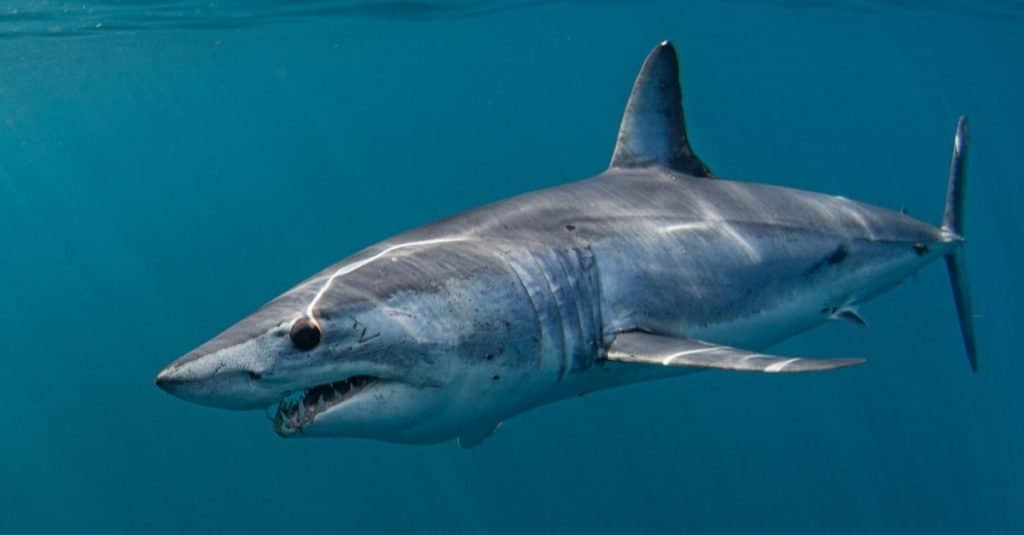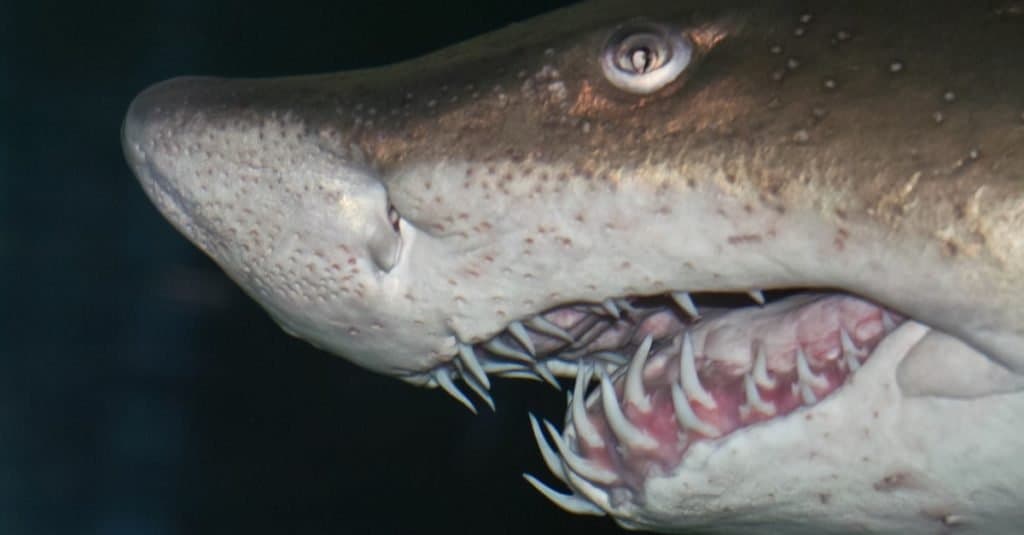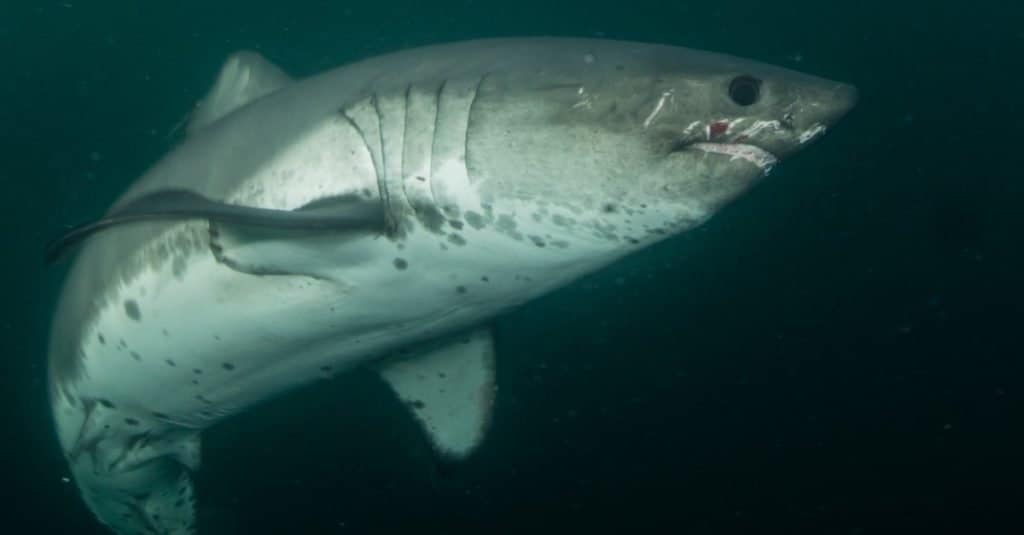When the Discovery Channel unveiled its 2021 Shark Week lineup one title stood out among the 33 shark-related specials: Ninja Sharks 2: Mutants Rising.
While the title sounds more like a comic book (Teenage Mutant Ninja Turtles, anyone?) than a serious nature documentary, Ninja Sharks 2 delivered on its promise of detailing four sharks that have mutated and evolved ‘superpowers’ that make them unique among the more than 500 shark species that have been classified today.
But What Exactly is a Ninja Shark?
If you’re browsing through Discovery’s Shark Week schedule and seeing Ninja Sharks 2, you’re sure to ask the question, “what exactly is a ninja shark?”
The title of the show is clearly not meant to be scientific. In the documentary, ‘ninja sharks’ are described as shark species that have unique ‘superpowers.’ That is to say, they’ve evolved to have special capabilities that make them unique. Specifically, the show details:
- A shark with a “bionic tail”
- Another shark with a “bullet-shaped body”
- A “mutant shark” that can hide motionless in old shipwrecks
- And a shark with a “superheated core” that hunts in frigid waters.
We’ll break down the details on each of these ‘ninja sharks’ below.
Thresher Sharks: A Whip for a Tail
Ninja Sharks 2 begins in the waters off New York’s Long Island, where thresher sharks congregate for two weeks during summers before descending back into the depths of the ocean.
What makes thresher sharks so interesting is that their “bionic tail” (the show’s words, not ours!) is the same length as their body. Thresher sharks can use this tail like a sword or even a whip, flinging it at 50 miles per hour and knocking fish in groups unconscious.
In Ninja Sharks 2, scientists attempt to tag a thresher shark with a camera to determine why they congregate off Long Island for just a couple of weeks during the summer. The conclusion: large “bait balls” of millions of fish congregate off nearby reefs during this time. Threshers converge on the area as their tails are tremendously effective at hunting these large schools of fish.

A pelagic thresher shark, Alopias pelagicus, swims by a
coral reef
in the Philippines.
©Shane Gross/Shutterstock.com
The Shortfin Mako Shark: A Bullet-Shaped Body
The show also focuses on mako sharks that are hunting near Long Island as well. What makes shortfin makos “ninja sharks?” For one they’re the fastest sharks on the planet.
Shortfin makos have a top recorded speed of 46 miles per hour. Put another way, they can burst through the water at 5 to 8 body lengths per second. Combine this speed with the mako shark’s size (up to 12 feet in length), and you can see why these sharks are such effective predators.
In fact, due to their speeding abilities, mako sharks will hunt other fish that also get up to record speeds such as sailfish and swordfish. Both sailfish and swordfish have sharp beaks which they can utilize to impale their attackers, so mako sharks don’t always come out successful. It’s common for makos to carry battle scars from fights with these fish, and in one case, a female mako was found dead with a sailfish beak protruding from her eye.

A huge Mako Shark swimming underwater offshore. The
Mako Shark
is not only the fastest shark in the water but one of the fastest creatures on earth
©Al McGlashan/Shutterstock.com
Sand Tiger Shark: A Shark that Can Hunt Motionless
Most sharks have to constantly be on the move for a simple reason, water moving through their gills is what allows sharks to breathe. In other words, for species like the great white shark, keep moving or perish!
Yet, the sand tiger shark has an adaptation that allows it to hunt differently than most sharks. Ninja Sharks describes the sand tiger’s ‘superpower’ as being able to gulp air at the surface, which allows the sharks to maintain buoyancy and float motionlessly. While other sharks can breathe without swimming (thanks to a technique known as buccal pumping), only the sand tiger shark is known to gulp air from the surface in this fashion.

The head of a big sand tiger shark in detail with a dark background.
©MP cz/Shutterstock.com
On Ninja Sharks 2, scientists explored sand tiger sharks using this ability to “hover” in shipwrecks off the coast of North Carolina. Ships sinking off the Carolinas in World War 1 & 2 have created a long stretch of reefs clustered around sunken ships known as ‘The Graveyard of the Atlantic.’
The tight spaces of these ships aren’t ideal hunting grounds for most sharks who have a hard time navigating shipwrecks. However, since the sand tiger shark can “hover” motionlessly, they’ve become top predators in shipwrecks by ambushing fish. In addition, sand tiger sharks will often congregate in large groups. Once they’ve congregated smaller schools of fish will encircle them.
With groups of sand tiger sharks hovering in the middle of these large schools of fish, they effectively become “cloaked.” As larger fish try picking off the schools of fish, sand tiger sharks leap out from their cover and are rewarded with a meal.
Salmon Shark: A Predator in Frigid Waters
The last shark featured on Ninja Sharks 2 was the salmon shark. Salmon sharks live in the Northern Pacific, stretching from Japan over to Alaska. As their name implies, their favored prey is salmon and other large fish.
What is their ‘ninja skill’ that landed them on the show? Salmon sharks have what’s effectively a ‘superheated core’ that allows their body to stay at 60 degrees even while the surrounding water is just a couple of degrees above freezing. This warmer body temperature gives the salmon shark faster movement while they’re hunting.

Rare underwater photograph of a Salmon Shark in open water, an elusive predator of the Northern
Pacific ocean
.
©Warren Metcalf/Shutterstock.com
Go deeper on Ninja Sharks!
Read our full article on:
Up Next…
- 15 Sharks in (and Near) Miami Beach If you are planning a vacation at Miami Beach, you may want to educate yourself on the types of sharks that live off its coast.
- Megalodon Vs Whale Shark: Who Would Win in a Fight? If you put the Megalodon against the whale shark, which creature would measure the largest, have the highest speed, and would be the strongest?
- Discover the World’s Oldest Fish (More than 300 Years Old!) There’s a fish traveling our oceans that has been living for over 300 years. Read on to learn more about this elder of the Deep.
The photo featured at the top of this post is © Valeri Potapova/Shutterstock.com
Thank you for reading! Have some feedback for us? Contact the AZ Animals editorial team.






